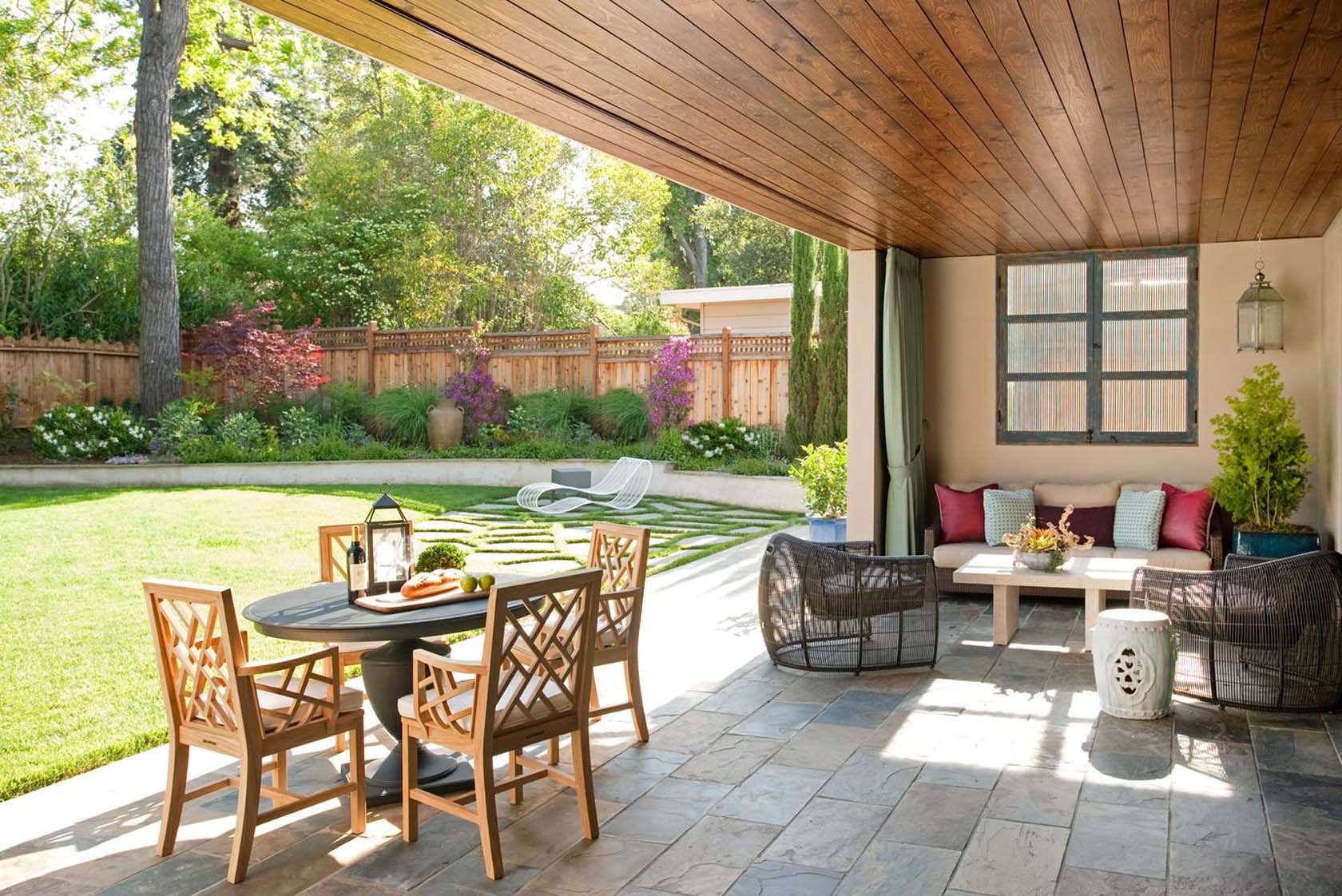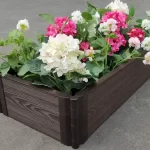Imagine a serene oasis where laughter and conversation mingle with the subtle melodies of nature, a place where time stands still as memories are forged under the sun’s warm embrace. Picture a sanctuary that unites the enduring charm of the past with the contemporary flair of the present, all nestled in the heart of your own backyard. This dream can become a reality when you incorporate the art of masonry into your patio design. As the foundation for an exquisite outdoor living space, masonry patios offer unparalleled beauty, durability, and versatility.
Journey with us here at A-Z Landscaping as we delve into the enchanting world of masonry patios and unveil the secrets to transforming your outdoor space into a haven of timeless elegance.
Masonry has been a construction staple for centuries, with the first recorded use of bricks dating back to 7000 BC. Masonry patios, however, gained prominence during the Renaissance era in Europe, where the grand courtyards and terraces of palaces and estates showcased the artistry of masonry design. Over time, masonry patios have evolved, and today, they are a symbol of sophistication and refinement in residential outdoor spaces.
Types of Masonry Materials
Brick
Brick is a popular patio choice due to its classic appeal and versatility. Red clay bricks are ubiquitous, but homeowners can also select from various colors and finishes for a personalized touch. Additionally, bricks are a sustainable choice, as they can be reclaimed or recycled.
Natural Stone
Natural stone patios exude elegance and grandeur, with materials such as limestone, granite, and slate offering unique textures and hues. However, natural stone can be more expensive and labor-intensive to install.
Concrete Pavers
Concrete pavers present a cost-effective and versatile option for masonry patios. They are available in numerous shapes, sizes, and colors, allowing homeowners to customize their patios to their tastes. Pavers also provide excellent durability and weather resistance.
Porcelain Tiles
Porcelain tiles are a recent addition to the masonry patio arsenal. Their sleek, contemporary aesthetic and unparalleled durability make them a suitable option for modern patio designs. They are resistant to stains, scratches, and fading, making them an ideal low-maintenance choice.
Choosing the Right Masonry Material for Your Patio
Selecting the appropriate material for your masonry patio depends on several factors, including your budget, design preferences, and maintenance requirements. Evaluate the climate and intended use of the patio to determine the most suitable option. For instance, porous materials like limestone may not fare well in regions with harsh winters, while brick may be ideal for a traditional and warm aesthetic.
Benefits of Masonry Patios
Durability
Masonry patios boast exceptional durability, capable of withstanding heavy traffic, weather fluctuations, and the test of time. With proper installation and maintenance, a masonry patio can last for decades.
Low Maintenance
Compared to wooden decks, masonry patios require minimal maintenance. Occasional sweeping, sealing, and spot cleaning will suffice to maintain their beauty and function.
Aesthetic Appeal
Masonry patios offer diverse design possibilities, allowing homeowners to create unique and visually striking outdoor spaces. The plethora of materials, patterns, and features available ensures a patio that reflects personal style and taste.
Eco-Friendliness
Many masonry materials, such as brick and natural stone, are eco-friendly options. They are sourced naturally, often locally, and can be recycled or reclaimed, reducing the project’s overall carbon footprint.
Design Principles for Masonry Patios
Balance
Achieving balance in your patio design entails equal distribution of visual weight. This can be achieved through symmetrical or asymmetrical arrangements of masonry features, furniture, and plantings.
Proportion
Ensure that the size of your masonry patio and its elements correspond with the scale of your home and outdoor space. Proportionate design elements create a cohesive and harmonious appearance.
Unity
Unity in design refers to the harmonious blending of various elements to create a unified theme. This can be achieved by utilizing complementary materials, colors, and patterns throughout the patio space.
Emphasis
An effective patio design incorporates focal points that draw attention and anchor the space. Masonry features such as fireplaces, water features, or a central seating area can serve as the focus of visual interest.
Preparing Your Patio Site
Before commencing the construction of your masonry patio, it is crucial to prepare the site adequately. This includes marking the boundaries, removing vegetation and debris, and grading the area to facilitate proper drainage.
Laying a Solid Foundation
The longevity and stability of your masonry patio depend on a solid foundation. Depending on the chosen material and local soil conditions, the foundation may consist of compacted gravel, sand, or a concrete slab.
Creating Your Patio Layout
When designing your masonry patio layout, consider factors such as traffic flow, sightlines, and the positioning of focal points. Creating a scaled sketch or using patio design software to visualize the final result and make necessary adjustments is advisable.
Incorporating Masonry Features and Accents
Retaining Walls
Retaining walls can be functional and decorative, supporting sloped terrain or creating multi-level patio spaces. Using masonry materials for retaining walls ensures a cohesive and visually appealing design.
Fire Pits and Fireplaces
Masonry fire pits and fireplaces serve as attractive focal points and sources of warmth, promoting year-round enjoyment of your patio space. Select materials and designs that complement the overall patio aesthetic.
Outdoor Kitchens
Outdoor kitchens, complete with masonry countertops and cooking areas, elevate the functionality and sophistication of your patio. The choice of masonry materials should consider factors such as heat resistance and ease of cleaning.
Water Features
Water features like fountains and ponds can be crafted using masonry materials to create a serene and tranquil ambiance in your patio space. The design and materials should harmonize with the overall theme of the patio.
Selecting a Masonry Pattern
Running Bond
The running bond pattern is a classic and simple choice, characterized by staggered brick or paver rows, with each brick or paver center-aligned with the edges of the ones above and below it. This pattern is visually appealing and easy to install, making it an ideal option for DIY enthusiasts.
Basketweave
The basketweave pattern entails placing pairs of bricks or pavers horizontally and vertically, creating a woven effect. This visually intriguing pattern adds texture and interest to your masonry patio.
Herringbone
Herringbone is a striking pattern formed by laying bricks or pavers at a 45-degree or 90-degree angle, creating a zigzag effect. This pattern lends a sense of movement and energy to the patio and is well-suited for areas with heavy foot traffic.
Diagonal
The diagonal pattern is achieved by laying bricks or pavers at a 45-degree angle to the patio edges, creating a diamond effect. This pattern can make a small patio appear larger and adds visual interest to the space.
Integrating Greenery and Softscaping
Incorporating greenery and softscaping elements into your masonry patio enhances its visual appeal and creates a harmonious connection with the surrounding landscape. Consider adding container gardens, planting beds, or even a vertical garden to soften the hardscape and provide a touch of nature.
Outdoor Lighting for Masonry Patios
Strategically placed outdoor lighting enhances your masonry patio’s ambiance, safety, and usability during nighttime hours. Options include path lights, step lights, and accent lighting to highlight masonry features and focal points.
Masonry Patio Furniture Ideas
Choose patio furniture that complements the style and materials of your masonry patio. Consider factors such as comfort, durability, and ease of maintenance when selecting furniture pieces. Mixing materials like wrought iron, wood, or resin can create a visually engaging and inviting space.
Accessorizing Your Masonry Patio
Accessorizing your masonry patio with decorative items such as cushions, rugs, and artwork can personalize the space and make it more inviting. Choose accessories that reflect your taste and coordinate with the overall design theme.
Masonry Patio Maintenance and Care
Routine maintenance is essential to preserving the beauty and function of your masonry patio. This may include sweeping, pressure washing, sealing, and addressing any cracks or damaged areas as needed.
Hiring A-Z Landscaping vs. DIY Masonry Patio Installation
The decision to hire a professional masonry contractor or embark on a DIY patio installation is often influenced by factors such as budget constraints, skill level, and project complexity. Engaging a reputable contractor like A-Z Landscaping ensures your masonry patio is meticulously crafted and skillfully installed, resulting in a stunning and long-lasting outdoor space. However, a DIY patio installation might be a tempting option for those with a knack for hands-on work and a desire to save on labor costs.
When considering a professional masonry contractor like A-Z Landscaping, you gain access to their wealth of experience, knowledge, and industry connections, which can prove invaluable in navigating the complexities of patio design and installation. Furthermore, a professional contractor can anticipate and address potential issues, guaranteeing that your patio project progresses smoothly and efficiently. On the other hand, a DIY approach may offer cost savings and a sense of accomplishment. Still, it also entails significant time investment, physical labor, and potential setbacks due to inexperience.
Budgeting for Your Masonry Patio Project
Creating a comprehensive budget that accounts for materials, labor, and additional features is essential to ensure that your masonry patio project is financially feasible. A-Z Landscaping recommends that homeowners begin by researching the costs associated with their desired masonry materials, considering factors such as durability, aesthetics, and availability. It’s also crucial to consider the scope and complexity of the project, as these elements will impact the overall cost.
When working with a professional contractor like A-Z Landscaping, homeowners can benefit from their expertise in sourcing high-quality materials at competitive prices and their ability to accurately estimate labor costs. Additionally, A-Z Landscaping can provide valuable guidance on incorporating additional features, such as outdoor kitchens, fire pits, or water features, while adhering to your established budget.
Conclusion: Creating a Timeless Outdoor Space
Incorporating masonry into your patio design can yield a stunning, durable, low-maintenance outdoor living space. By carefully selecting materials, patterns, and features that reflect your personal style and preferences, you can create a timeless outdoor retreat to be enjoyed for years to come.






